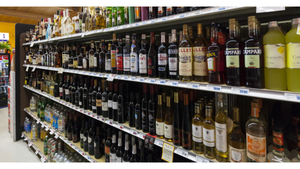A GUIDE TO THIS WEEK'S SPECIAL ANNIVERSARY ISSUE
Welcome to SN's 50th anniversary issue. This week we present the highlights of the last five decades in the form of 50 top trends or developments that impacted the supermarket industry.You may be wondering how to digest 50 trends in a single reading. Not to worry. These trends add up to more than their individual parts. Taken together they confirm the secret of supermarkets' success over the years:
July 22, 2002
David Orgel
Welcome to SN's 50th anniversary issue. This week we present the highlights of the last five decades in the form of 50 top trends or developments that impacted the supermarket industry.
You may be wondering how to digest 50 trends in a single reading. Not to worry. These trends add up to more than their individual parts. Taken together they confirm the secret of supermarkets' success over the years: Retailers always managed to update their operations for changing times and changing needs of customers. That's a key theme that runs throughout this issue, the most comprehensive historical look at the industry we've ever published.
The 50 trends are grouped by sections. So, for instance, under the section called "Adapting to Changing Lifestyles" are trend stories on the consumer revolution of the 1960s and on the prepared-foods revolution that continues to this day. There are also category-specific sections, including those on fresh foods, packaged grocery and nonfoods. There is an expanded general news section in the front of the magazine on Pages 8 through 18, with the balance of the magazine containing only anniversary-related stories.
All of these details are spelled out in the table of contents on Pages 3 and 4, an excellent roadmap to everything that follows.
I will point to a couple of other special features that should not be missed. The first is an extensive timeline of industry milestones on Pages 20 and 21. Each of the last 50 years are represented in a format that provides context by incorporating not only key supermarket industry dates but also key milestones in the recent history of our country during that time period.
Another feature is a presentation of the Top 10 innovations of the past 50 years that impacted the supermarket industry. The full list appears on Page 23 with details of each innovation appearing on Pages 22 and 23.
Finally, for those readers who feel especially confident about their industry knowledge, there is an anniversary quiz on Page 69 that requires a mastery of industry acronyms of the past 50 years. I should warn you that it's not an easy quiz and the accompanying scoring guide is tough on grading.
Looking at all of these stories, it becomes clear that some supermarkets were ahead of their time in how they attempted to meet the needs of customers. For instance, in the early 1960s SN reported on early tests of gas stations at food stores and a test of coin-operated dry cleaning and laundry at one company. These services would become more widespread in later years.
Supermarkets weren't always on target in predicting the needs of shoppers. There were some strange initiatives along the way. Two that surfaced in the early 1950s were mechanical go-carts to enable "housewives" to be seated as they shop, and shopping hours exclusively for men in order to boost male traffic.
Needless to say, those efforts didn't exactly catch on. But the point is supermarkets always tried. And when something didn't work, they tried something else.
The supermarket industry has changed a great deal, but one thing that hasn't changed is that SN is still here providing the play-by-play each week. I hope you enjoy reading this issue as much as SN's editors enjoyed preparing it.
David Orgel
Editor-in-Chief
[email protected]
About the Author
You May Also Like




